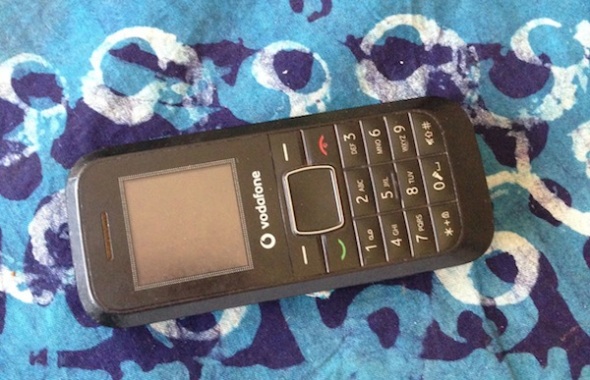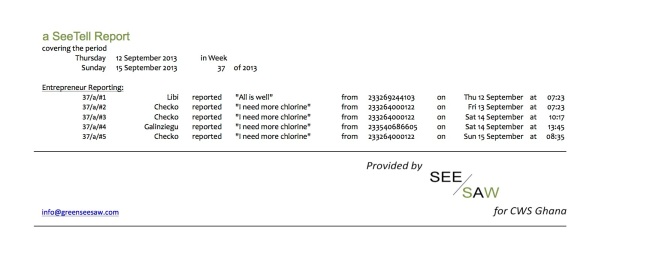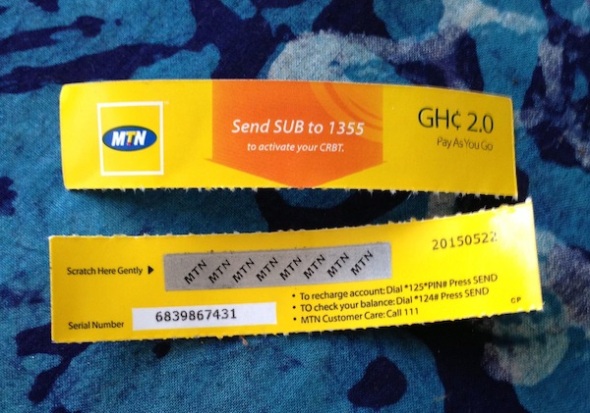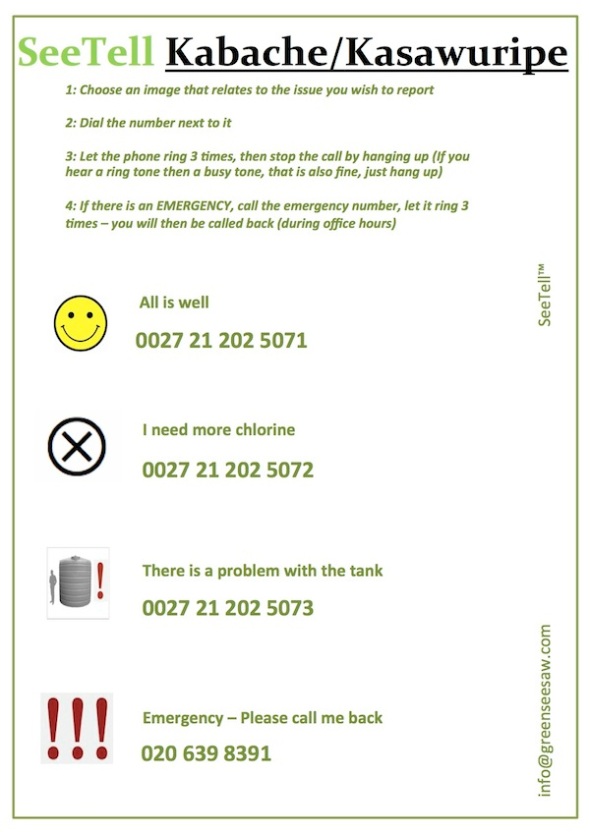
The rains “are finished” as Ghanaians would say, which means CWS water treatment centers are back in business! In the rainy season, which lasts from June- October in the Northern Region of Ghana, CWS communities collect rainwater. Rainwater is plentifully and freely available in these months, so community members opt for free drinking water instead of paying the $.05 to fill their 20 L containers at the water treatment center.

Now that the rains have stopped, the only available clean water source in CWS communities is for people to buy water from the centers. The only other water available for drinking would be stored rainwater in 200 L blue drums or clay pots (not safe for drinking), stored rainwater in cement rainwater catchment tanks (not safe for drinking), stored rainwater in hand dug wells (not safe for drinking) or dugout/stream water (definitely not safe for drinking).
While the answer seems obvious (they should go to the center!), it’s not that simple. The entrepreneurs have not been regularly treating water and the community members have not been regularly buying water. So this limbo period is always an adjustment for CWS communities. As CWS Assistant Project Manager Shak put it, ” It’s no longer raining. So this is just our biggest challenge for the next month, getting people used to buying water again. ”

Behavior change isn’t easy. And that’s what CWS is focusing on in transitioning from the rainy to the dry season. Changing the entrepreneurs’ behavior so they incorporate water treatment and selling water into their daily routines and changing the consumers’ behavior, so they get used to coming to buy water.

In most communities, this transition is seamless. For example, in Kpanayili where the entrepreneurs now use a metal polytank stand to move the center from the various water sources throughout the year, their water business is operating with high sales! Field staffer Wahab is in charge of the monitoring and evaluation for Kpanayili. He reported on November 20, 2013, “It was such a happy day, seeing Kpanayili’s center up and running after the rains.” Last year, community members took their sweet time transitioning back to using the center and this year, they haven’t missed a beat.
But in other communities, the transition has not been so seamless. For example, in Nyamaliga, the community relies solely on rainwater throughout the rainy season because their dugout path gets muddy and slippery. I along with the other staff can vouch for this as we’ve all taken a tumble trying to get to the dugout. Sana and Sofou who run the center refuse to treat water until the community members help them weed the path to the water treatment center, which means a few weeks of people not having access to clean drinking water. This baffles the CWS field staff because if the path is dry then the entrepreneurs should be able to access the dugout! CWS Project Manager Peter reported this week that the path was clear so there should be no delay in water treatment… as for that one we’ll have to report back next week.

In Tohinaayili, the community decided to move their center to the town center during the rainy season to treat rainwater. This is Tohinaayili’s first transition from the rainy to the dry season, as CWS implemented here in the Winter of 2012-2013. While their polytank is not empty yet, the entrepreneurs have been lackadaisical to move it back to the dugout. The CWS field staff has seen this type of transition before and found that it takes a few seasons to get the hang of it.
Finally, the path to Gbateni was flooded all rainy season. The CWS staff had not been there since May! On November 20, 2013, CWS field staffers Amin and Peter were finally able to get there. They arrived at the center and it was empty, community members did not have clean water in their storage containers. The entrepreneurs were also not home so they could not figure out what was wrong. The staff will have to get back ASAP. Buhijaa and Chanaayili, villages that are also inaccessible to CWS staff during the rainy season, were up and running the entire season! Chanaayili even sent a message to Gidanturi mid rainy season requesting that CWS staff send aquatabs (chlorine tablets) with someone who was able to make it across the flooded road.


These seasonal transitions are a challenge for CWS every year. Each community adapts to the changing of seasons at a different pace. But the cool thing about CWS is that the field staff is with these entrepreneurs and communities throughout the process! The staff shows the entrepreneurs how to rally assemblymen, chiefs and queen mothers to get the communities back on track or even modifies the CWS technology (like the moveable metal polytank stands) so that these water businesses will be sustainable without staff help in the future!
-Brianán






































